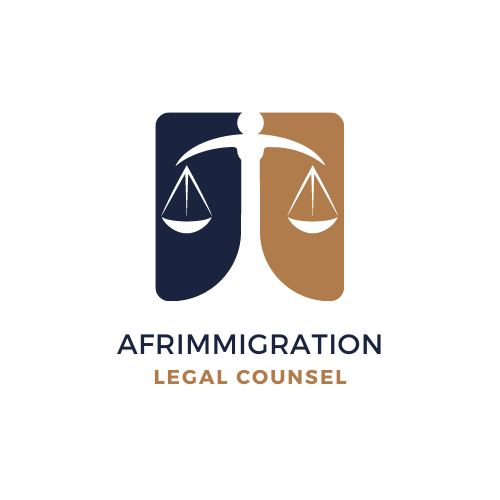Family-Based Immigration
Family unification is an important principle governing U.S. immigration policy. The family-based immigration system allows U.S. citizens and LPRs to bring certain family members to the United States. Family-based immigrants are admitted either as immediate relatives of U.S. citizens or through the family preference system.
An unlimited number of visas are available every year for the immediate relatives of U.S. citizens. Prospective immigrants in this category must meet standard eligibility criteria, and petitioners must meet certain age and financial requirements. Immediate relatives are:
- spouses of U.S. citizens;
- unmarried minor children of U.S. citizens (under 21 years old); and
- parents of U.S. citizens (petitioner must be at least 21 years old to petition for a parent).
A limited number of visas are available every year under the family preference system. Prospective immigrants in the family preference system must meet standard eligibility criteria, and petitioners must meet certain age and financial requirements. The family preference system includes:
- adult children (married and unmarried) and brothers and sisters of U.S. citizens (petitioner must be at least 21 years old to petition for a sibling); and
- spouses and unmarried children (minor and adult) of LPRs.
In order to balance the overall number of immigrants arriving based on family relationships, Congress established a complicated system for calculating the available number of family preference visas for any given year. The number is determined by starting with 480,000 (the maximum number in principle allocated for all family-based immigrants) and then subtracting the number of immediate relative visas issued during the previous year and the number of aliens “paroled” into the United States during the previous year. Any unused employment preference immigrant numbers from the preceding year are then added to this total to establish the number of visas that are available for allocation through the family preference system. However, by law, the number of family-based visas allocated through the preference system may not be lower than 226,000. The number of immediate relatives often exceeds 250,000 in a given year and triggers the 226,000 minimum for preference visas. As a result, the total number of family-based visas often exceeds 480,000. In Fiscal Year (FY) 2019, family-based immigrants comprised 68.8 percent of all new LPRs in the United States.
The family-based immigration system is summarized in Table 1.
Table 1: Family-Based Immigration System
| Category | U.S. Sponsor | Relationship | Numerical Limit |
|---|---|---|---|
|
Immediate Relatives |
U.S. Citizen adults |
Spouses, unmarried minor children, and parents |
Unlimited |
| Preference allocation | |||
| 1 | U.S. citizen | Unmarried adult children | 23,400* |
| 2A | LPR | Spouses and minor children | 87,900 |
| 2B | LPR | Unmarried adult children | 26,300 |
| 3 | U.S. citizen | Married adult children | 23,400** |
| 4 | U.S. citizen | Brothers and Sisters | 65,000*** |
| * Plus any unused visas from the 4th preference.
** Plus any unused visas from 1st and 2nd preference. ***Plus any unused visas from all other family-based preferences. |
|||
| Worldwide level of family preference allocation: 480,000 minus visas issued to immediate relatives and parolees, plus unused employment visas from the previous fiscal year. Floor for preference categories: 226,000. | |||
| Source: William A. Kandel, Permanent Legal Migration to the United States, (CRS Report No. R42866) (Washington, DC: Congressional Research Service, 2014), https://www.fas.org/sgp/crs/homesec/R42866.pdf. | |||
In order to be admitted through the family-based immigration system, a U.S. citizen or LPR sponsor must petition for an individual relative, establish the legitimacy of the relationship, meet minimum income requirements, and sign an affidavit of support stating that the sponsor will be financially responsible for the family member(s) upon arrival in the United States or adjustment to LPR status within the United States. The individual relative also must meet certain eligibility requirements that include submitting to a medical exam and obtaining required vaccinations (including a COVID-19 vaccination), an analysis of any immigration or criminal history, as well as demonstrating that they will not become primarily dependent on the government for subsistence.
The spouses and children who accompany or follow the principal immigrant (the one sponsored by the U.S. citizen or LPR under the family-preference category) are referred to as derivative immigrants. Derivative immigrants also count toward the numerical caps for the categories in Table 1. That means that many of the visa slots allotted for members of these categories are often actually used by the spouses and children of the members. For example, in FY 2019, 61,031 people were admitted in the category “brothers and sisters” of U.S. citizens, but only 22,179 of them were actual brothers or sisters of U.S. citizens. The rests were spouses (14,956) and children (23,896) of the siblings of U.S. citizens.
Credit: American Immigration Council
Legal Representation
Our reputable legal counsels are specialized in Fiancé Visa and can assist you with this process. Call or email us today to kick start your process.
Related links:
- Frequently Asked Questions
- Contact Us
- Schedule An Appointment

